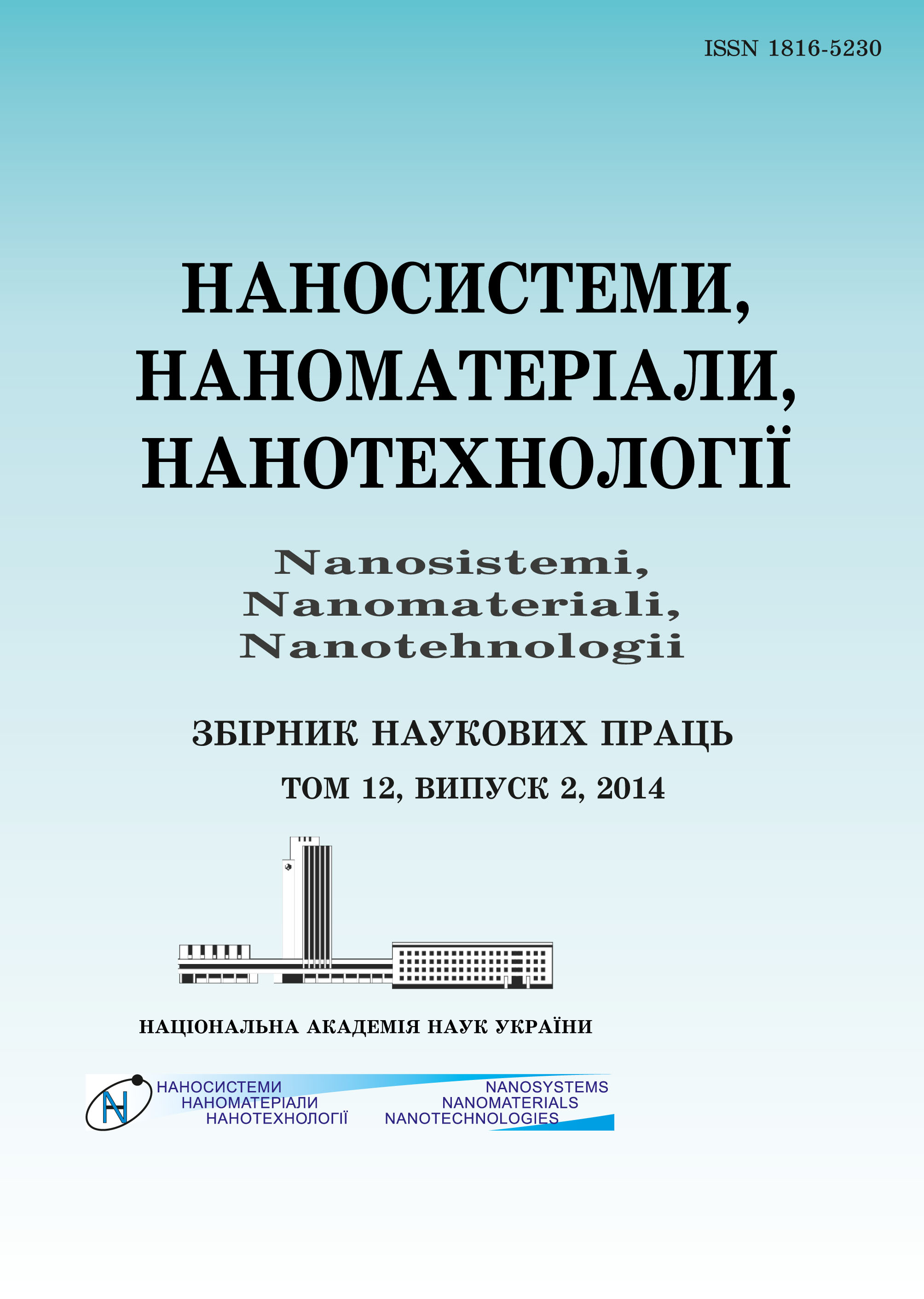|
|
|||||||||
 |
Year 2017, Volume 15, Issue 2 |
|
|||||||
|
|||||||||
Âûïóñêè/2017/òîì 15 /âûïóñê 2 |
E. V. Lobko, Z. Î. Gagolkina, Yu. V. Yakovlev, Å. À. Lysenkov, V. V. Klepko
«The Influence of Synthesis Procedure on Electrical and Mechanical Properties of Netlike Polyurethane/Carbon Nanotubes’ Composites»
345–354 (2017)
PACS numbers: 61.41.+e, 61.48.De, 62.23.Pq, 62.25.-g, 72.80.Tm, 73.61.Ph, 73.63.Fg
The composites based on cross-linked polyurethanes with in situ addition of multiwalled carbon nanotubes are obtained. The polyurethanes are synthesized in two ways: at the stage of prepolymer or adduct. The influences of the synthesis way, the order of filler addition, and the content of filler on the electrical conductivity, thermal conductivity, and mechanical properties of composites are analysed. As shown, the polyurethane-based composites synthesized from prepolymer and adduct are characterized by drastic increasing of electrical conductivity with percolation threshold at the 0.65% nanotubes content and more than 2.5% one, respectively. The values of tensile strength are equal to 14 and 6 MPa, respectively.
Key words: cross-linked polyurethane (CPU), carbon nanotubes (CNT), percolation threshold, electrical conductivity, tensile strength.
https://doi.org/10.15407/nnn.15.02.0345
REFERENCES
1. V. A. Eletskiy, A. A. Knizhnik, B. V. Potapkin, and Kh. M. Kenny, Uspekhi Fizicheskikh Nauk, 185, No. 3: 225 (2015) (in Russian).
https://doi.org/10.3367/UFNr.0185.201503a.0225
2. M. H. Jomaa, K. Masenelli-Varlot, L. Seveyrat, L. Lebrun, M. C. Dib Jawhar, E. Beyou, and J. Y. Cavaille, Compos. Sci. Technol., 121, No. 2: 1 (2015).
https://doi.org/10.1016/j.compscitech.2015.10.019
3. T. Chen, L. Pan, M. Lin, B. Wang, L. Liu, Y. Li, J. Qiu, and K. Zhu, Polym. Test., 47, No. 3: 4 (2015).
https://doi.org/10.1016/j.polymertesting.2015.08.001
4. M. R. Ayatollahi, S. Shadlou, M. M. Shokrieh, and M. Chitsazzadeh, Polym. Test., 30, No. 5: 548 (2011).
https://doi.org/10.1016/j.polymertesting.2011.04.008
5. D. S. Bangarusampath, H. Ruckdaschel, V. Altstadt, J. K. W. Sandler, D. Garray, and M. S. P. Shaffer, Chem. Phys. Lett., 482, No. 8: 105 (2009).
https://doi.org/10.1016/j.cplett.2009.09.064
6. D. C. Davis, J. W. Wilkerson, J. Zhu, and V. G. Hadjiev, Compos. Sci. Technol., 71: 1089 (2011).
https://doi.org/10.1016/j.compscitech.2011.03.014
7. B. Fernandez-d'Arlas, U. Khan, L. Rueda, L. Martin, J. A. Ramos, J. N. Coleman, M. L. Gonzalez, A. Valea, I. Mondragon, M. A. Corcuera, and A. Eceiza, Compos. Sci. Technol., 72, No. 2: 235 (2012).
https://doi.org/10.1016/j.compscitech.2011.11.007
8. H. Jin Yoo, Y. Chae Jung, N. Gopal Sahoo, and J. Whan Cho, J. Macromol. Sci. Part B, 45, No. 4: 441 (2006).
https://doi.org/10.1080/00222340600767471
9. H. Xia and M. Song, Soft Matter., 1, No. 5: 386 (2005).
https://doi.org/10.1039/b509038e
10. S. Jiang, Q. Li, Y. Zhao, J. Wang, and M. Kang, Compos. Sci. Technol., 110: 87 (2015).
https://doi.org/10.1016/j.compscitech.2015.01.022
11. Izotsianaty. Metod Opredeleniya Massovoy Doli Izotsianatnykh Grupp. Tekhnicheskie Usloviya (Dzerzhinskiy Filial GIAP: 1989) (in Russian).
12. GOST 14236-81. Plyonki Polimernyye. Metod Ispytaniya na Rastyazhenie, (Moscow: Gos. Kom. po Standartam: 1981) (in Russian).
13. S. Guo, C. Zhang, W. Wang, T. Liu, W.C. Tjiu, C. He, and W.-D. Zhang, Polym. Polym. Compos., 16, No. 8: 501 (2008).
14. W. Chen, X. Tao, and Y. Liu, Compos. Sci. Technol., 66, No. 15: 3029 (2006).
https://doi.org/10.1016/j.compscitech.2006.01.024
15. M. Wong, M. Paramsothy, X.J. Xu, Y. Ren, S. Li, and K. Liao, Polymer, 44, No. 25: 7757 (2003).
https://doi.org/10.1016/j.polymer.2003.10.011
|
©2003—2021 NANOSISTEMI, NANOMATERIALI, NANOTEHNOLOGII G. V. Kurdyumov Institute for Metal Physics of the National Academy of Sciences of Ukraine.
E-mail: tatar@imp.kiev.ua Phones and address of the editorial office About the collection User agreement |